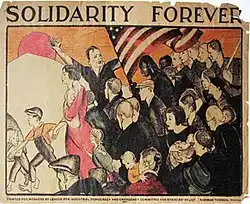
The Great Depression, which began in 1929 following the Wall Street Crash, led to mass migrations in many different countries. The Depression began at the end of a period of pronounced economic growth across the Western world in the 1920s, as the boom came to an end when severe losses were recorded on the stock market in Wall Street in New York in the autumn of 1929. In the years that followed, many countries entered into an economic depression, spiraling inflation and social decline in what was the worst economic crisis of the twentieth century. As people looked desperately for jobs and the bare essentials of life, they often left where they lived and migrated to other countries or internally within their own nation. Examples include the mass migration from the Dust Bowl of the United States to states like California and Oregon, the exodus of many Finns to Russia in search of work or the drift towards London by people living in northern England and Wales in search of work and poor relief.[1]
Chronology of eventsChronology of events

The years immediately following the end of the World War I in 1918 had been nearly as tumultuous for the Western world as the war itself. The Spanish flu, the disintegration of old empires, and civil wars ravaged Europe down to 1923. But in the aftermath of this, a period of exceptional economic growth began, one which led the era to become known as the Roaring Twenties. Yet much of this was based on speculative economic investment, and in the autumn of 1929, it all came crashing down as the stock markets in Wall Street, New York, experienced severe losses. What followed were years of economic hardship as unemployment sky-rocketed, inflation went out of control, particularly in some countries like Germany, and people often lost all their savings and material wealth.[2]

Such was the economic decline that the era, which lasted well into the 1930s, is generally known as the Great Depression. Not only was it a period of pronounced economic hardship, but it also resulted in political instability across the Western world. For instance, in Germany, it allowed for the rise of the Nazi Party under Adolf Hitler. Prior to 1929, there was a small political group based in Bavaria in southern Germany with a very minor following, but with the onset of economic hardship in Germany, their racial and ultra-nationalist stance became worryingly popular, so much so that they claimed power in 1933 and set Europe and the world on the path to the World War II.[3]
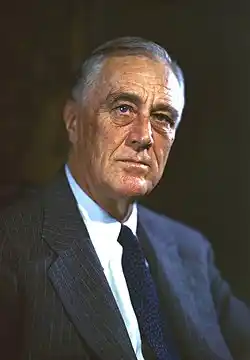
Elsewhere, the road out of the Great Depression was laid out by skilled politicians. In the United States, Franklin Delano Roosevelt came to power as the 32nd President in 1933. He inaugurated a program known as the New Deal. Through this, the federal government invested huge sums of money into programs to provide work to Americans after years of unemployment by building roads and bridges, laying down new railway tracks, and generally developing the infrastructure of the country. It was enormously successful and laid the foundations for the post-war American middle class. Other countries, though, were less fortunate. Many countries in South America such as Argentina which had experienced major economic growth in the early twentieth century slipped into economic and political decline from 1929 onwards from which they would struggle to recover for much of the twentieth century.[4]
Extent of migrationExtent of migration
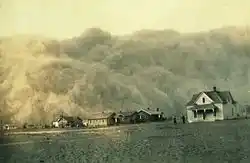
The Great Depression had a major impact on migration patterns in a great many countries. Some of this involved international migration. For instance, many Finns moved to Russia to try to acquire work in the 1930s.[5] However, as most countries imposed restrictions on immigration into their countries and drastically scaled back the number of visas being issued in order to limit their levels of unemployment, most of the migration which occurred from 1929 onwards was actually inward migration, where people moved from one part of a country to another where job prospects or even social assistance to the poor was better.[6] A good example is Britain, where many people drifted from northern England where the industrial factories had laid off tens of thousands of workers to London.
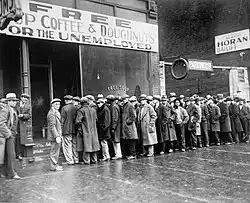
The most significant inward migration, though, occurred within the United States. Here people generally left rural areas for the cities in search of work, with urban hubs such as New York, Chicago, Boston, Philadelphia, Atlanta, St. Louis, Los Angeles, and Seattle receiving hundreds of thousands of inner migrants. This was most acute when it came to the Dust Bowl, a region in the central United States around parts of Texas and Oklahoma primarily, but also Kansas, Arkansas, Colorado, and New Mexico. This region was experiencing an ecological catastrophe during the 1930s owing to drought and erosion of the soil owing to decades of over-farming, one replete with enormous dust storms, thus the nickname "Dust Bowl". This development compounded the impact of the Great Depression and led to the largest migration in American history; by 1940, roughly 2.5 million people had left the Dust Bowl and headed for various parts of the United States to make a new life.[7]
Demographic impactDemographic impact
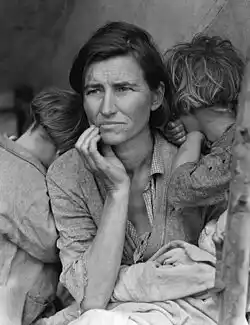
The exiles from the Dust Bowl headed to a great many different parts of America and in the process changed the demographic landscape of the United States. Some only moved short distances, staying within the Midwest in regions that were not as badly impacted by the dust storms and breakdown of farming land, yet others headed much further. Many of those who did migrate westwards towards the Pacific Coast, with upwards of a quarter of a million people alone arriving in California. Here, they often became known colloquially as ‘Okies’ or ‘Arkies’ to indicate their places of origin in Oklahoma and Arkansas and transformed the demography of the West Coast. It is estimated that one-eighth of the population of California today are people who are descended to some extent from migrants who arrived in the state from the Dust Bowl in the 1930s. Yet, not all of this change was pleasant or smooth, and at a time when people all over America were in need of jobs and resources, many of these migrants from the Dust Bowl were viewed with hostility by people in the regions to which they arrived. The plight of these individuals was best captured by Dorothea Lange in her famous photograph of Florence Owens Thompson, a thirty-two-year-old mother of seven who migrated from the Dust Bowl to California.[8]
See alsoSee also
Explore more about the Great DepressionExplore more about the Great Depression
- Newspapers record collection at MyHeritage
- How to Find Your Family in Newspapers with SuperSearch on the MyHeritage Knowledge Base
- Mining the Newspaper Databases on MyHeritage for Your Family History on the MyHeritage Knowledge Base
- Newspaper Research Strategies Using MyHeritage on the MyHeritage Knowledge Base
- Drawing on Your Ancestors’ Resilience Can Help You Get Through Tough Times on the MyHeritage blog
- Spanish Flu Retail Opportunities on the MyHeritage blog
- Unmasking Pandemic Masks, Then and Now on the MyHeritage blog
- The 1940 U.S. Census: Chronicling the Great Depression into World War II at Legacy Family Tree Webinars
References
- ↑ Great Depression History. History Channel
- ↑ Stock Market Crash of 1929. Federal Reserve History
- ↑ THE GREAT DEPRESSION. United States Holocaust Museum
- ↑ The Lessons of the Great Depression. The Atlantic
- ↑ Gelb, Michael. 'Karelian Fever': The Finnish Immigrant Community during Stalin's Purges. Europe-Asia Studies, Vol. 45, No. 6 (1993), pp. 1091-1116
- ↑ Migration and Immigration during the Great Depression. US History II (American Yawp)
- ↑ Timeline: The Dust Bowl. PBS
- ↑ How the Dust Bowl Made Americans Refugees in Their Own Country. History Channel

